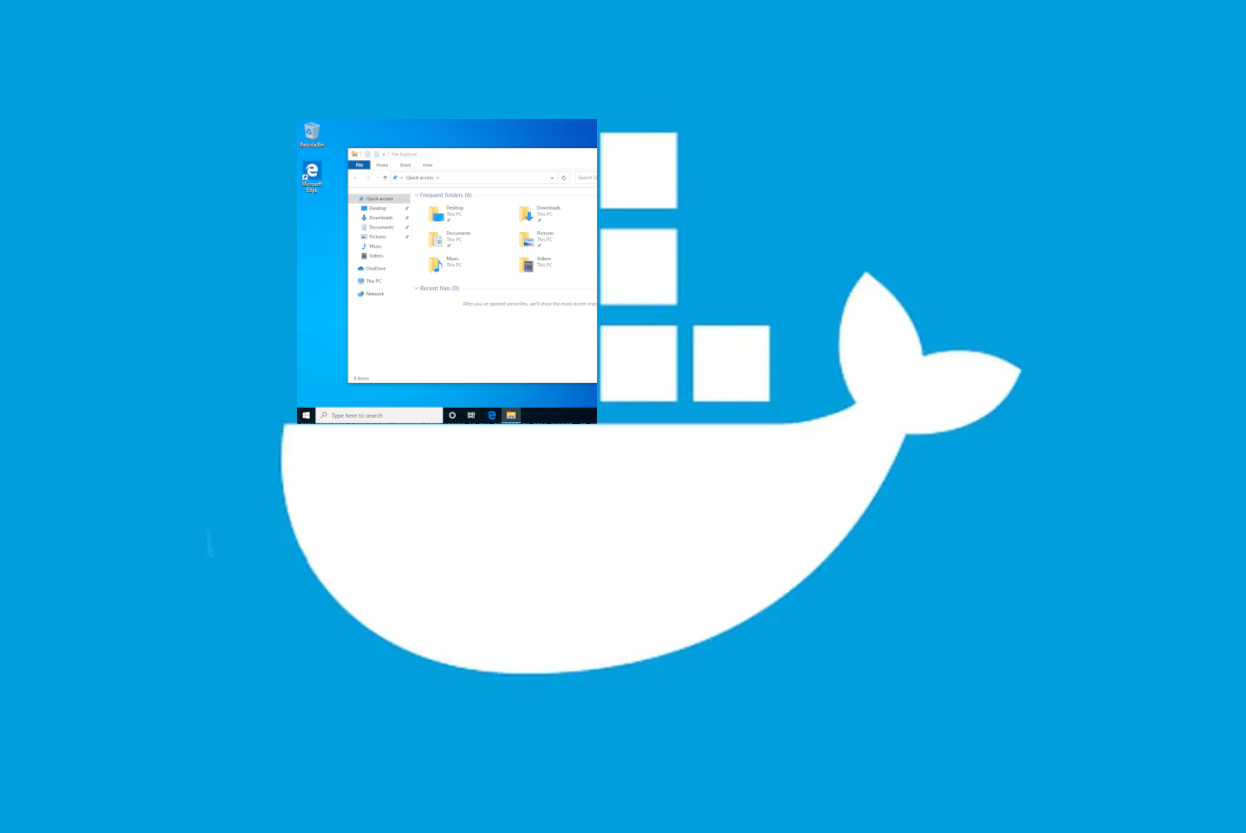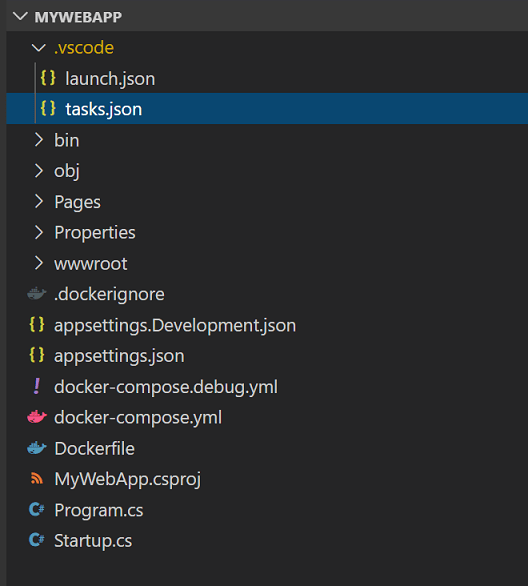- If you are using Docker Toolbox on OS X, mounting an external USB drive in a Docker container is a three part process. Add a shared folder to the Oracle VirtualBox Virtual Machine Installing Docker on OS X describes how you can install Docker Toolbox, which also includes Docker Machine and Oracle VirtualBox.
- Note: You will still need to declare the device mapping in your docker-compose file or docker command, even if you explicitly declare the CAMERADEV.The value of CAMERADEV is used in starting the mjpg-streamer service, whereas the devices mapping is used by docker to make sure the container has access to the device.
- List Docker Commands Step 2: Download a Docker Image. In order to start and run a Docker container, first, an image must be downloaded from Docker Hub on your host. Docker Hub offers a lot of free images from its repositories. To search for a Docker image, Ubuntu, for instance, issue the following command: # docker search ubuntu.
- The Docker extension provides a docker debug configuration provider that manages how VS Code will launch an application and/or attach a debugger to the application in a running Docker container. This provider is configured via entries within launch.json, with configuration being specific to each application platform supported by the provider.
With version 0.9.0 and later, the Docker extension provides more support for debugging applications within Docker containers, such as scaffolding launch.json configurations for attaching a debugger to applications running within a container.

The Docker extension provides a docker debug configuration provider that manages how VS Code will launch an application and/or attach a debugger to the application in a running Docker container. This provider is configured via entries within launch.json, with configuration being specific to each application platform supported by the provider.
Yes, docker start -a container-name is the command you can use to start a container that has been created with docker run. Note the -a flag which is shorthand for -attach. This way the container is started in the foreground, just like when you use docker run (which runs a container in the foreground by default).
The Docker extension currently supports debugging Node.js, Python, and .NET Core applications within Docker containers.
Requirements
Download Docker Container Manually Free
Scaffolding or pasting a launch configuration into launch.json is not sufficient to build and debug a Docker container. To successfully run a Docker launch configuration, you must have:
Download Docker Container Manually Download
- A Dockerfile.
docker-buildanddocker-runtasks intasks.json.- A launch configuration that invokes these tasks.

We recommend using the Docker: Add Docker Files to Workspace.. command to create these items, if none of these assets already exist. If you already have a functional Dockerfile, we recommend using the Docker: Initialize for Docker debugging command to scaffold a launch configuration and Docker-related tasks.
Node.js

More information about debugging Node.js applications within Docker containers can be found at Debug Node.js within a container.
Example launch.json configuration for debugging a Node.js application:
Python
More information about debugging Python applications within Docker containers can be found at Debug Python within a container.
Example launch.json configuration for debugging a Python application:
Download Docker Container Manually Windows 10
.NET Core
More information about debugging .NET Core applications within Docker containers can be found in Debug .NET Core within Docker containers.
The previous (Preview) .NET Core Docker debugging support (utilizing 'type': 'docker-coreclr' instead of the current preview's 'type': 'docker') is being deprecated. You can still find documentation on that support at Debug .NET Core - Deprecated.
Example launch.json configuration for debugging a .NET Core application: Ubuntu start docker.
Configuration reference
| Property | Description |
|---|---|
containerName | Name of the container used for debugging. |
dockerServerReadyAction | Options for launching a browser to the Docker container. Similar to serverReadyAction, but replaces container ports with host ports. |
removeContainerAfterDebug | Whether to remove the debug container after debugging. |
platform | The target platform for the application. Can be netCore or node. |
netCore | Options for debugging .NET Core projects in Docker. |
node | Options for debugging Node.js projects in Docker. |
python | Options for debugging Python projects in Docker. |
dockerServerReadyAction object properties
| Property | Description |
|---|---|
action | The action to take when the pattern is found. Can be debugWithChrome or openExternally. |
containerName | The container name to match the host port. |
pattern | The regex pattern to look for in Debug console output. |
uriFormat | The URI format to launch. |
webRoot | The root folder from which web pages are served. Used only when action is set to debugWithChrome. |

node object properties
These properties are the same as those described in the VS Code documentation for attaching a debugger to Node.js applications. All properties passed in the node object will be passed on to the Node.js debug adaptor, even if not specifically listed below.
| Property | Description | Default |
|---|---|---|
port | Optional. The debug port to use. | 9229 |
address | Optional. TCP/IP address of the debug port. | |
sourceMaps | Optional. Enable source maps by setting this to true. | |
outFiles | Optional. Array of glob patterns for locating generated JavaScript files. | |
autoAttachChildProcesses | Optional. Track all subprocesses of debuggee and automatically attach to those that are launched in debug mode. | |
timeout | Optional. When restarting a session, give up after this number of milliseconds. | |
stopOnEntry | Optional. Break immediately when the program launches. | |
localRoot | Optional. VS Code's root directory. | The root workspace folder. |
remoteRoot | Optional. Node's root directory within the Docker container. | /usr/src/app |
smartStep | Optional. Try to automatically step over code that doesn't map to source files. | |
skipFiles | Optional. Automatically skip files covered by these glob patterns. | |
trace | Optional. Enable diagnostic output. |
python object properties
| Property | Description | Default |
|---|---|---|
host | The host for remote debugging. | |
port | The port for remote debugging. | 5678 |
pathMappings | Maps the project path between local machine and remote host. | |
projectType | Type of Python app. | |
justMyCode | Debug only user-written code. | |
django | Django debugging. | false |
jinja | Jinja template debugging (such as Flask). | false |
Download Docker Container Manually Using

The Docker extension provides a docker debug configuration provider that manages how VS Code will launch an application and/or attach a debugger to the application in a running Docker container. This provider is configured via entries within launch.json, with configuration being specific to each application platform supported by the provider.
Yes, docker start -a container-name is the command you can use to start a container that has been created with docker run. Note the -a flag which is shorthand for -attach. This way the container is started in the foreground, just like when you use docker run (which runs a container in the foreground by default).
The Docker extension currently supports debugging Node.js, Python, and .NET Core applications within Docker containers.
Requirements
Download Docker Container Manually Free
Scaffolding or pasting a launch configuration into launch.json is not sufficient to build and debug a Docker container. To successfully run a Docker launch configuration, you must have:
Download Docker Container Manually Download
- A Dockerfile.
docker-buildanddocker-runtasks intasks.json.- A launch configuration that invokes these tasks.
We recommend using the Docker: Add Docker Files to Workspace.. command to create these items, if none of these assets already exist. If you already have a functional Dockerfile, we recommend using the Docker: Initialize for Docker debugging command to scaffold a launch configuration and Docker-related tasks.
Node.js
More information about debugging Node.js applications within Docker containers can be found at Debug Node.js within a container.
Example launch.json configuration for debugging a Node.js application:
Python
More information about debugging Python applications within Docker containers can be found at Debug Python within a container.
Example launch.json configuration for debugging a Python application:
Download Docker Container Manually Windows 10
.NET Core
More information about debugging .NET Core applications within Docker containers can be found in Debug .NET Core within Docker containers.
The previous (Preview) .NET Core Docker debugging support (utilizing 'type': 'docker-coreclr' instead of the current preview's 'type': 'docker') is being deprecated. You can still find documentation on that support at Debug .NET Core - Deprecated.
Example launch.json configuration for debugging a .NET Core application: Ubuntu start docker.
Configuration reference
| Property | Description |
|---|---|
containerName | Name of the container used for debugging. |
dockerServerReadyAction | Options for launching a browser to the Docker container. Similar to serverReadyAction, but replaces container ports with host ports. |
removeContainerAfterDebug | Whether to remove the debug container after debugging. |
platform | The target platform for the application. Can be netCore or node. |
netCore | Options for debugging .NET Core projects in Docker. |
node | Options for debugging Node.js projects in Docker. |
python | Options for debugging Python projects in Docker. |
dockerServerReadyAction object properties
| Property | Description |
|---|---|
action | The action to take when the pattern is found. Can be debugWithChrome or openExternally. |
containerName | The container name to match the host port. |
pattern | The regex pattern to look for in Debug console output. |
uriFormat | The URI format to launch. |
webRoot | The root folder from which web pages are served. Used only when action is set to debugWithChrome. |
node object properties
These properties are the same as those described in the VS Code documentation for attaching a debugger to Node.js applications. All properties passed in the node object will be passed on to the Node.js debug adaptor, even if not specifically listed below.
| Property | Description | Default |
|---|---|---|
port | Optional. The debug port to use. | 9229 |
address | Optional. TCP/IP address of the debug port. | |
sourceMaps | Optional. Enable source maps by setting this to true. | |
outFiles | Optional. Array of glob patterns for locating generated JavaScript files. | |
autoAttachChildProcesses | Optional. Track all subprocesses of debuggee and automatically attach to those that are launched in debug mode. | |
timeout | Optional. When restarting a session, give up after this number of milliseconds. | |
stopOnEntry | Optional. Break immediately when the program launches. | |
localRoot | Optional. VS Code's root directory. | The root workspace folder. |
remoteRoot | Optional. Node's root directory within the Docker container. | /usr/src/app |
smartStep | Optional. Try to automatically step over code that doesn't map to source files. | |
skipFiles | Optional. Automatically skip files covered by these glob patterns. | |
trace | Optional. Enable diagnostic output. |
python object properties
| Property | Description | Default |
|---|---|---|
host | The host for remote debugging. | |
port | The port for remote debugging. | 5678 |
pathMappings | Maps the project path between local machine and remote host. | |
projectType | Type of Python app. | |
justMyCode | Debug only user-written code. | |
django | Django debugging. | false |
jinja | Jinja template debugging (such as Flask). | false |
Download Docker Container Manually Using
netCore object properties
Properties passed in the netCore object are generally passed on to the .NET Core debug adaptor, even if not specifically listed below. The complete list of debugger properties is in the OmniSharp VS Code extension documentation.
| Property | Description |
|---|---|
appProject | The .NET Core project (.csproj, .fsproj, etc.) to debug. |
Next steps
Read on to learn more about:
